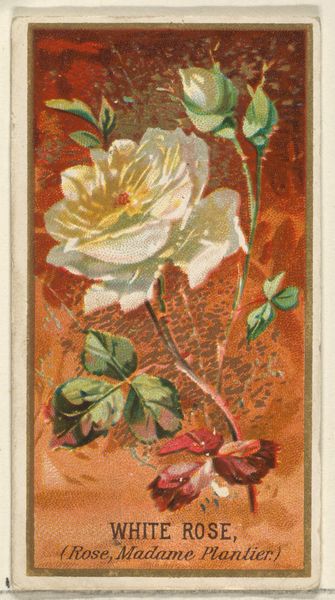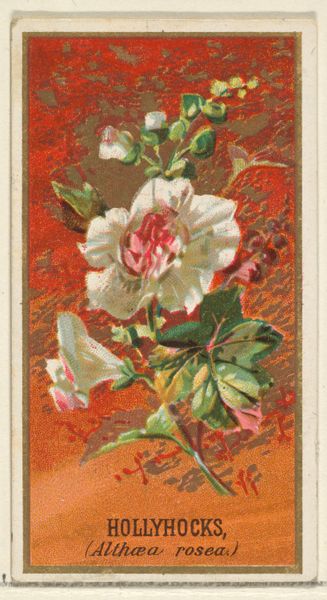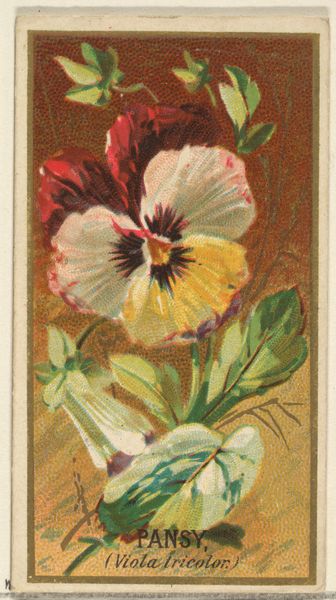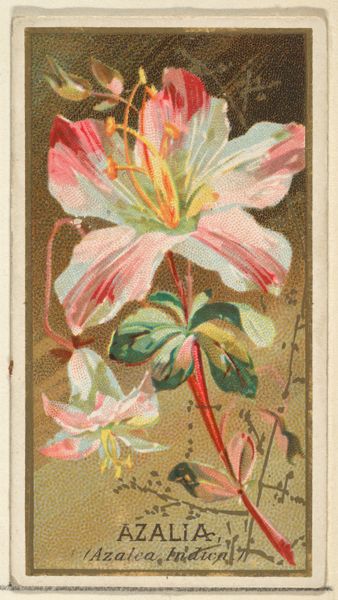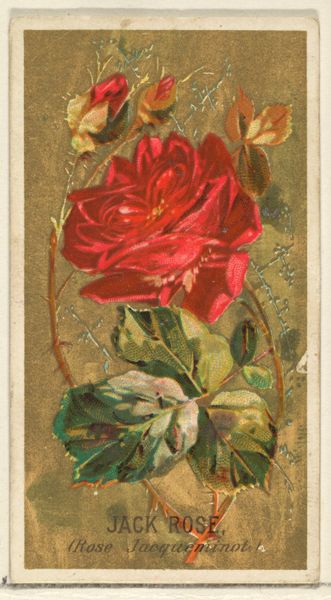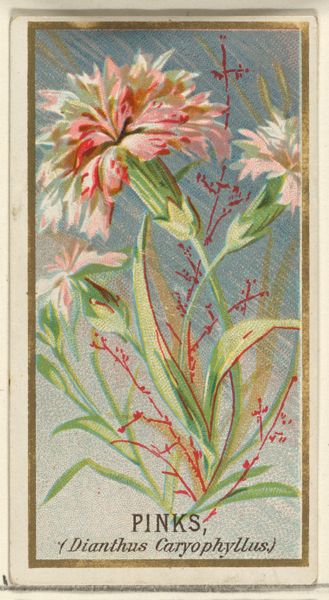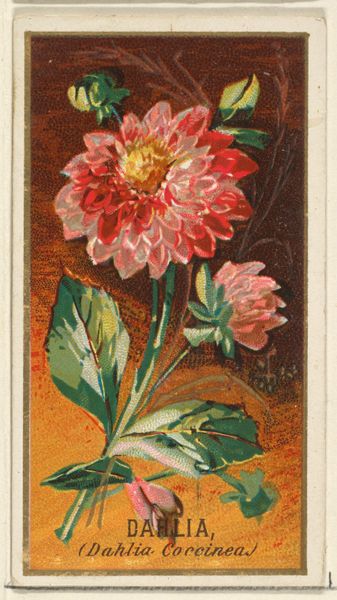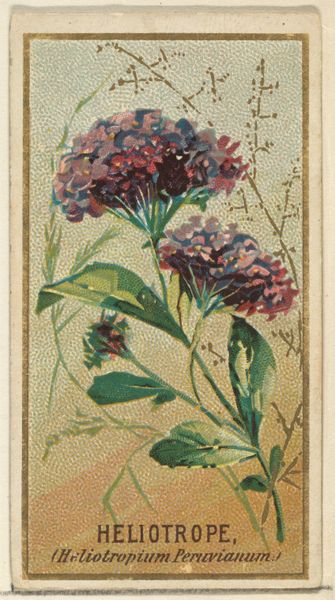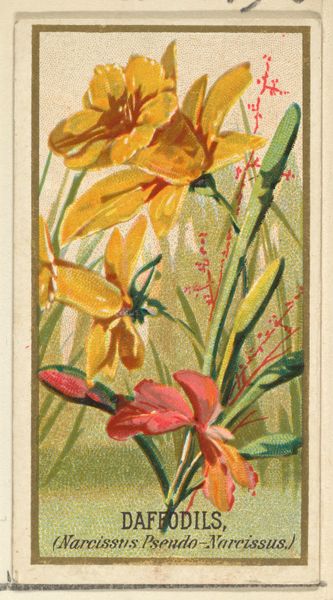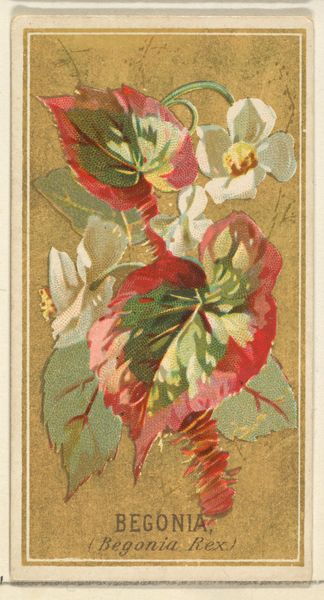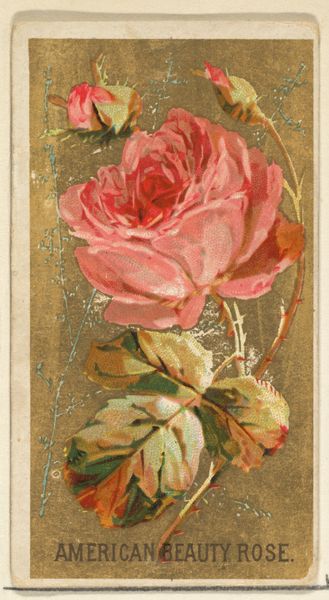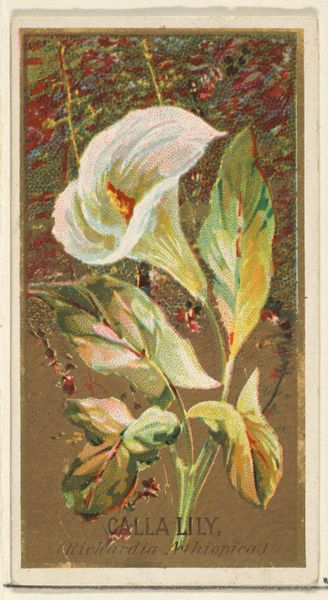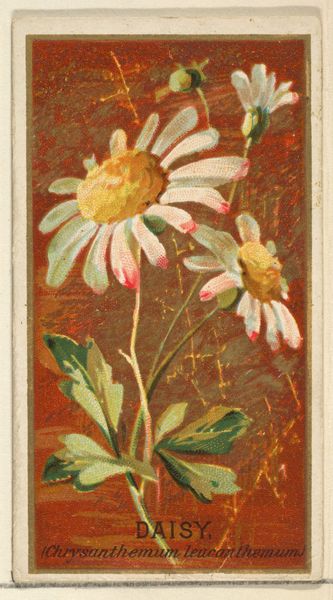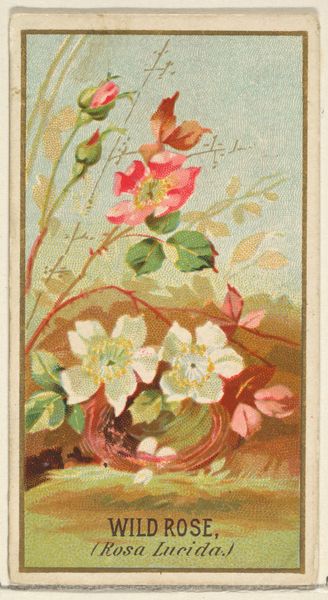
Poppy (Papaver Rhoeas), from the Flowers series for Old Judge Cigarettes 1890
0:00
0:00
# print
#
watercolour illustration
Dimensions: sheet: 2 3/4 x 1 1/2 in. (7 x 3.8 cm)
Copyright: Public Domain
Curator: This vibrant little artwork is "Poppy (Papaver Rhoeas)," part of the Flowers series made around 1890 by Goodwin & Company for Old Judge Cigarettes. It’s a watercolor and print drawing, demonstrating a clear influence of Japonisme. What are your first thoughts on it? Editor: Its compactness immediately strikes me—the composition is meticulously organized within the frame, the layers of petals creating depth, and the poppy practically vibrates with color. Curator: Goodwin & Company was aiming to appeal to a specific, and expanding, consumer demographic. Consider the context: the rise of mass production coincided with an increase in the disposable income of the working class. The cigarette cards acted as a form of accessible art and a tool for brand loyalty but also propagated certain ideals. How do the cultural connotations of the poppy fit into this picture? Editor: Indeed, its vibrant color suggests that an appeal was being made for sensory allure over complex ideological representation. Look at the use of red—bold yet also delicate in its gradations across the petals. Semiotically, the poppy represents sleep, dreams, or even oblivion; the strategic employment of visual symbolism speaks directly to desire through basic structural form. Curator: Exactly. And it's interesting how these trade cards, seemingly innocent in their floral depiction, also carry implications related to gender and societal expectations. Were these cards primarily marketed to men? If so, how does the delicate beauty of the poppy play into the then-prevailing notions of masculinity and consumerism? Editor: If so, it also becomes increasingly noteworthy how subtly transgressive the presentation truly becomes by subverting these values. Moreover, the flatness inherent in the Japonisme aesthetic challenges traditional notions of Western pictorial space. Curator: So, rather than seeing this image as merely decorative, we can see that its creation and distribution was entwined with the development of modern consumer culture, loaded with aspirations and potential contradictions. Editor: It's fascinating how even within a seemingly straightforward image, rigorous investigation of form and symbolism leads us toward layered implications and multiple interpretations.
Comments
No comments
Be the first to comment and join the conversation on the ultimate creative platform.
